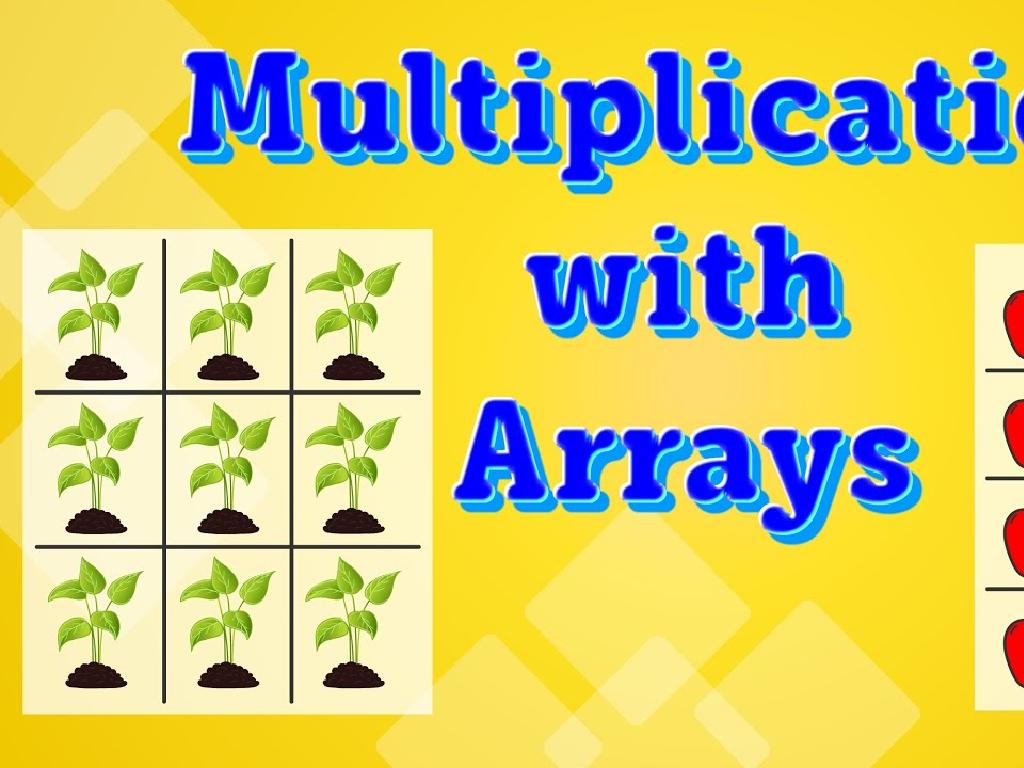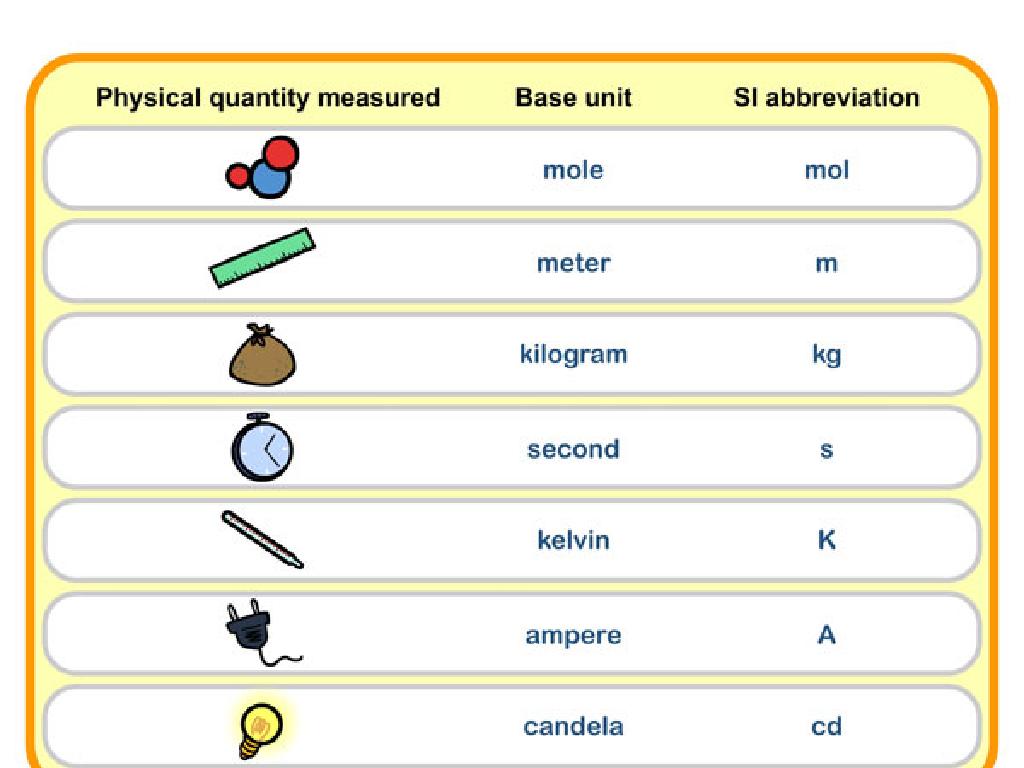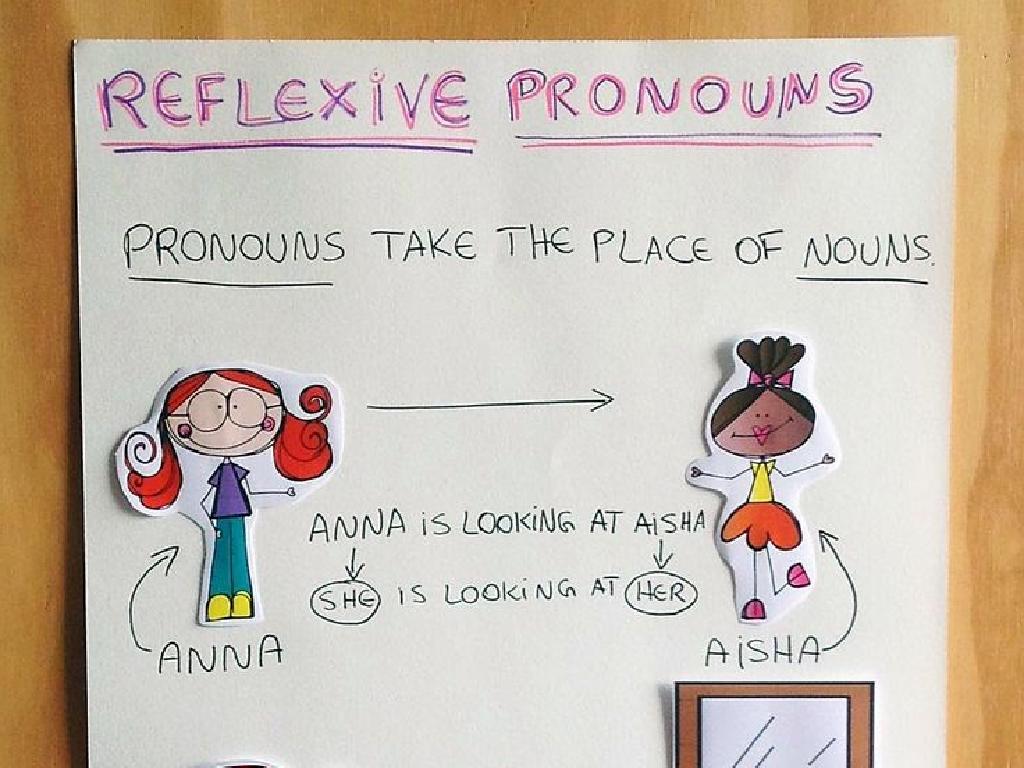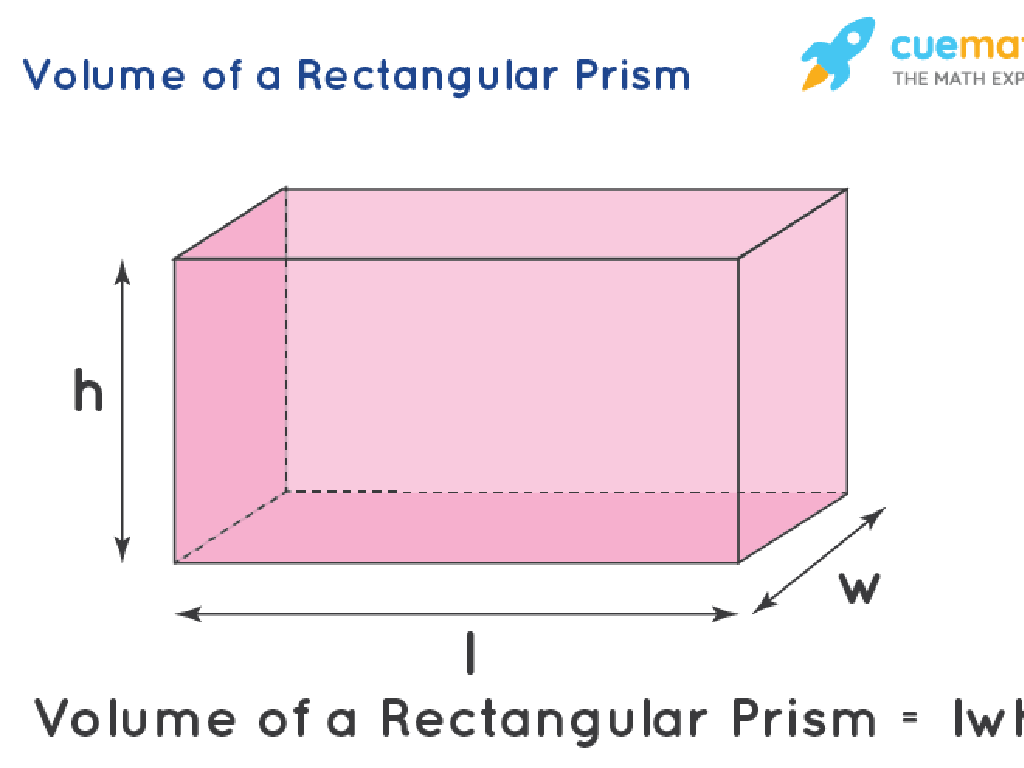Place Values In Decimal Numbers
Subject: Math
Grade: Fifth grade
Topic: Decimal Place Value
Please LOG IN to download the presentation. Access is available to registered users only.
View More Content
Mastering Decimal Place Values
– Explore numbers beyond the decimal
– Numbers to the right of the decimal point represent parts of a whole, like 0.5 in 1.5
– Decimal places organize numbers
– Decimal places help us read and write numbers accurately, such as money amounts
– Each place has a value
– For example, in 3.47, the 4 is in the tenths place, and the 7 is in the hundredths place
– Today’s goal: Understand decimal places
|
This slide introduces students to the concept of decimal place values, emphasizing the importance of understanding numbers beyond the decimal point. It’s crucial to explain that each place value represents a different fraction of a whole, which is a foundational concept in our number system. Use everyday examples like money to illustrate the tenths and hundredths places. Today’s goal is to ensure students can identify and understand the value of each decimal place and how it contributes to the overall value of a number. Activities can include identifying place values in various numbers and comparing decimals to understand their size.
Understanding Decimal Numbers
– Define a decimal number
– A number with a whole part and a fractional part, separated by a decimal point.
– Decimal numbers in daily life
– Money amounts, measurements, and statistics often use decimals.
– Significance of the decimal point
– The decimal point separates the whole number from the fractional part.
|
This slide introduces the concept of decimal numbers, which are essential in various aspects of daily life and mathematics. Begin by defining a decimal number as one that includes a whole number part and a fractional part, separated by a decimal point. Provide relatable examples such as money (e.g., $3.50), measurements (e.g., 2.5 meters), and statistics (e.g., batting average of .275 in baseball) to illustrate how decimals are used in everyday situations. Emphasize the role of the decimal point in distinguishing between the whole number and the fractional part. This foundational understanding will be crucial as students learn to perform operations with decimal numbers and explore their place values.
The Place Value Chart
– Understanding place value
– A chart that shows the value of each digit in a number.
– Value of digits in places
– Each position in a decimal number has a different value.
– Practice labeling the chart
– We’ll label a chart together to learn the places.
|
This slide introduces the concept of the place value chart, which is crucial for understanding decimal numbers. Begin by explaining that each place in a number has a different value, and this value increases tenfold as you move left on the chart. Emphasize the importance of the decimal point as a reference point for place value. During the practice activity, provide a blank place value chart and guide the students through labeling each place, from the ones to the tenths, hundredths, and beyond. Encourage students to ask questions and assist each other in understanding. This interactive activity will help solidify their grasp of place values in decimal numbers.
Comparing Decimal Places
– How to compare decimal numbers
– Line up the decimals and compare digits from left to right.
– Use a place value chart
– Each place has a value 10 times less than the place to its left.
– Activity: Order decimals
– Arrange a set of decimal numbers in ascending order.
|
This slide introduces students to the concept of comparing decimal numbers. Start by explaining how to compare decimals by lining them up and comparing digits from left to right, starting with the highest place value. Introduce the place value chart and explain how each place to the right is 10 times smaller than the one to its left. For the activity, provide students with a list of decimal numbers and have them practice ordering the numbers from least to greatest. This will help solidify their understanding of place value and the comparison of decimal numbers. Make sure to walk around the classroom to assist students who may need help and to check for understanding.
Adding & Subtracting Decimals
– Align decimal points vertically
– Add and subtract as whole numbers
– Example: Adding decimals
– Let’s add 3.75 + 2.6. Align the decimals and add like whole numbers.
– Example: Subtracting decimals
– Now, subtract 5.2 – 1.08. Align decimals, then subtract like whole numbers.
|
When adding or subtracting decimals, the first step is to write the numbers so that the decimal points are directly in line with each other. This ensures that the place values are correctly aligned. After aligning, add or subtract as if they were whole numbers, remembering to bring the decimal point straight down into the answer. For the example of adding, show how to line up 3.75 and 2.6, emphasizing the importance of the decimal point alignment and then adding the numbers. For subtraction, use 5.2 and 1.08, again focusing on alignment and then subtracting. Encourage students to practice with additional examples and to check their work by estimating the sums and differences.
Rounding Decimal Numbers
– Understanding when and why to round
– We round to estimate or when exact values aren’t needed
– Rules for rounding decimals
– If the next digit is 5 or more, round up. If it’s less than 5, keep it the same.
– Rounding to the nearest whole number
– 3.6 rounds to 4; 7.2 rounds to 7
– Class activity: Practice rounding
|
This slide introduces the concept of rounding decimal numbers, which is a useful skill for making numbers easier to work with. Explain that rounding is often used for estimating, simplifying calculations, or when precision is not necessary. Go over the rules for rounding: look at the digit to the right of the desired place value, and round up if it’s 5 or higher, otherwise round down. Provide examples and have students practice by rounding various decimals to the nearest whole number. For the class activity, give students a list of decimal numbers to round and discuss the results as a class. This will help reinforce their understanding of the rounding rules.
Class Activity: Decimal Detective
– Find value of underlined digits
– Round decimals to nearest tenth
– If 3.146 is rounded, it becomes 3.1
– Round to nearest hundredth
– 0.987 rounded to hundredth is 0.99
– Group activity: Decimal mysteries
– Work together to solve decimal problems
|
This interactive class activity is designed to help students understand the place value of underlined digits in decimal numbers and practice rounding decimals. Start by explaining how to determine the value of a digit based on its position. Then, guide students through rounding decimals to the nearest tenth, hundredth, and thousandth, providing examples for each. For the group activity, create ‘Decimal Mystery’ cards with various decimal challenges for students to solve in small groups. This will encourage collaboration and application of the concepts learned. Possible activities could include finding errors in rounded numbers, ordering decimals from least to greatest after rounding, or estimating sums and differences of decimals by rounding.
Wrapping Up: Decimal Place Values
– Recap of decimal place values
– Homework: Worksheet completion
Complete the provided worksheet on decimal place values to reinforce today’s lesson.
– Reminder: Regular practice
Remember, consistent practice is key to understanding decimals.
– Keep practicing for mastery!
|
As we conclude today’s lesson on decimal place values, it’s important to review the main points covered. Ensure that students understand the significance of each place value in a decimal number and how it relates to fractions and whole numbers. For homework, assign the worksheet on decimal place values to solidify their understanding. Remind students that mastering decimals requires regular practice, and encourage them to work on additional problems at home. During the next class, we can review the worksheet answers and address any questions or difficulties the students may have encountered.






